Want to help the children? Help the parents.
Babies and toddlers are vulnerable during bushfires, floods, storms and cyclones. We all have a part to play in helping families stay safe during disasters.
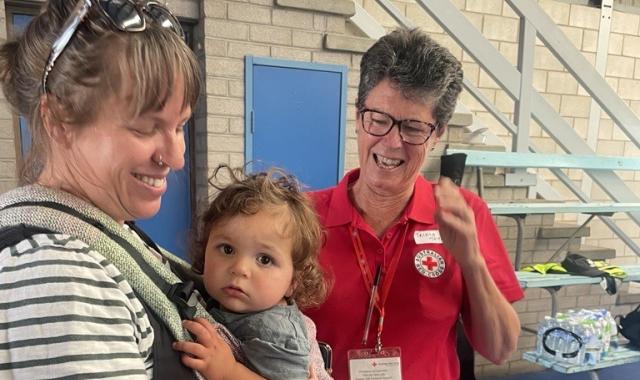
ABA's collection of emergency resources includes information to share with parents and caregivers and a variety of resources to use in your role.
These resources were developed with input from emergency and health organisations as part of ABA’s Community Protection for Infants and Young Children in Bushfire Emergencies project, funded by the Australian Government’s Preparing Australian Communities grant.
Information and resources on this page
Which resources will help me most in my role?
Select your area of work
Healthcare
Evacuation centre planning or operation
Frontline emergency response
Early childhood education and care (ECEC) and child-focused services
Relief and recovery
Complete the FREE eLearning Module
In just 15–20 minutes, learn simple and practical ways to support babies, toddlers, and their caregivers during emergencies.
The module covers key topics including vulnerability, emergency planning, evacuation support and recovery.
Perfect for anyone involved in emergency response, health, early childhood, welfare or community services.

Help parents plan ahead to protect their babies and toddlers
Emergencies can happen any time. Planning ahead helps parents keep young children safe.
Encourage parents to:
- Pack an evacuation kit with everything their baby or toddler needs for at least 3 days
- Plan to leave early
- Stay with family or friends if possible, instead of going to an evacuation centre
Resources to share:
- Fact sheets with practical advice on feeding and caring for babies in emergencies
- Evacuation kit lists to help parents pack based on their child’s age and feeding needs
- Posters for health workers or maternity services to promote breastfeeding as part of emergency planning
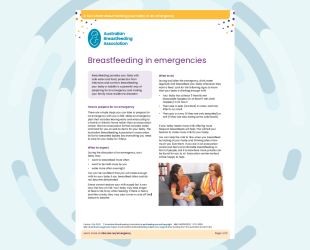
Breastfeeding in emergencies
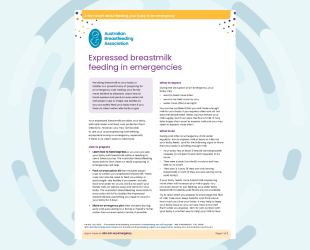
Expressed breastmilk feeding in emergencies
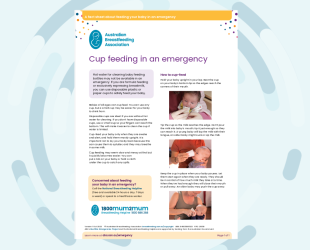
Cup feeding in emergencies
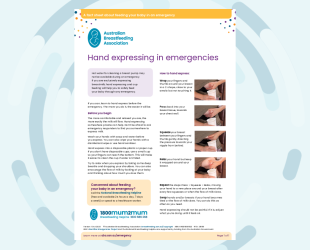
Hand expressing in emergencies
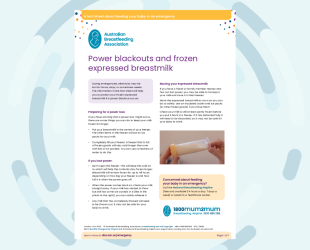
Blackouts (power outages) and frozen breastmilk
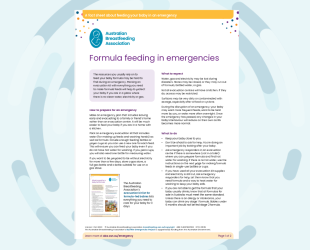
Formula feeding in emergencies
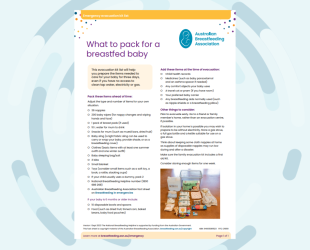
Breastfed baby
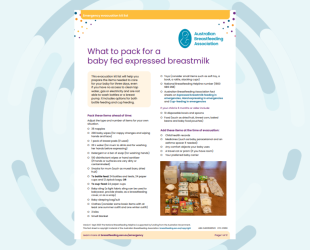
Baby fed expressed breastmilk
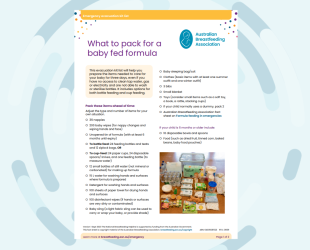
Baby fed formula
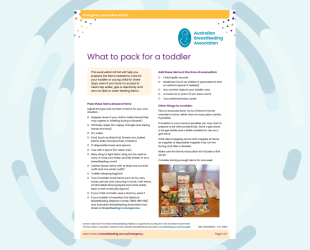
Child older than 6 months
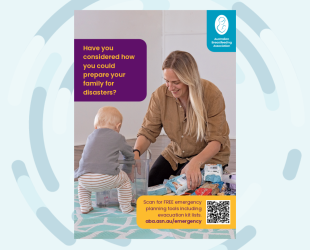
Posters for self-printing
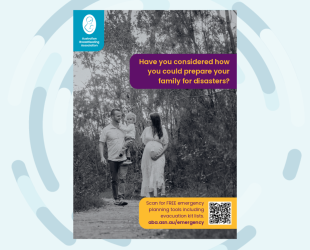
Posters for professional printing
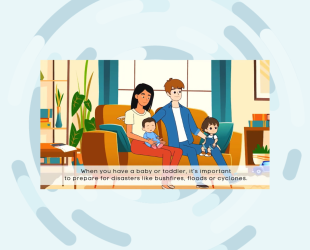
Emergency planning for parents of babies and toddlers
Support parents with young children in evacuation centres
Evacuation centres can be tough for families, especially mums with babies, toddlers or who are pregnant. Mothers who evacuate alone may need extra practical or emotional support. Your help can make a big difference.
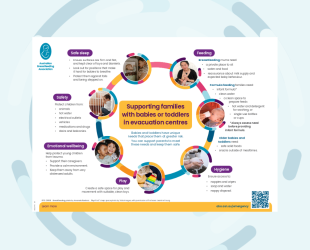
Evacuation centre infographic
Learn simple ways to support parents and protect infants in evacuation centres and other disaster settings
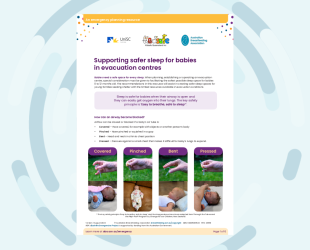
Support safer sleep for babies
Babies need a safe space for every sleep. This resource, co-developed with KidSafe QLD and the University of the Sunshine Coast, shows how to support safe sleep during emergencies.
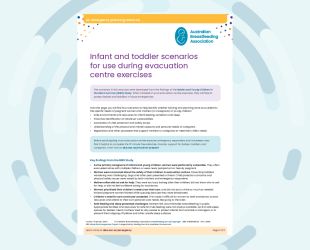
Training exercise scenarios
These scenarios in training or simulations to check if local evacuation plans meet the needs of parents with babies and toddlers.
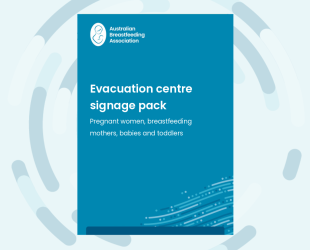
Signage pack
Print and display signs to help parents find support, feeding spaces and baby care areas in evacuation centres.
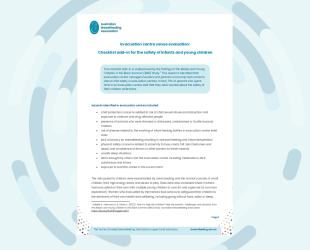
Evacuation centre venue evaluation
Use this checklist to assess whether a venue is suitable for babies and young children before setting up an evacuation centre.
Support for Babies, Toddlers and Families During Recovery
Parents and young children need ongoing support in the days, weeks and months after a disaster. These resources can help you provide safe, practical care during recovery.

Managing infant formula in emergencies
ABA’s policy and guidance on formula use, donation and distribution, endorsed by 27 children’s health and emergency organisations in Australia and New Zealand.
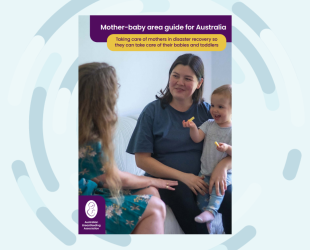
Mother-baby area guide for Australia
Everything you need to set up and manage a safe, supportive space for mums and babies in your local recovery efforts.
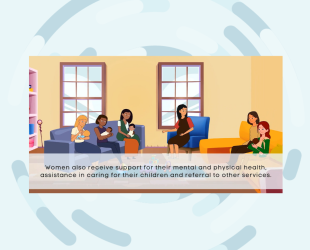
Mother-baby area animation
A short video explaining what mother-baby areas are and how they protect infants and toddlers after emergencies.
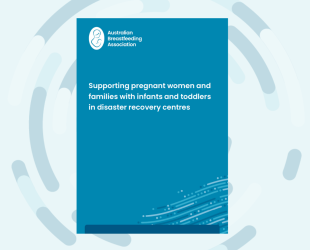
Guide to supporting pregnant women and parents in relief and recovery centres
Learn how to meet the needs of pregnant women and families with young children in relief and recovery centres using clear, practical steps.

Signage pack
Easy-to-print signs to help families find baby care areas and support services in recovery centres.

Watch the BiBS Study Webinar
Join our expert panel as they explore key findings from the BiBS study "Want to help the children? Help the parents."

Explore the evidence
Read the full findings and recommendations from the Babies and Young Children in the Black Summer (BiBS) Study.
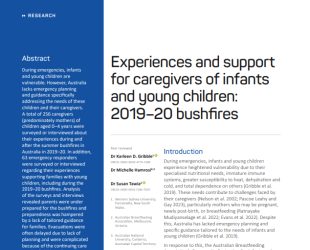
Read our publication
Experiences and support for caregivers of infants and young children: 2019–20 bushfires featured in the July 2024 edition of the Australian Journal of Emergency Management